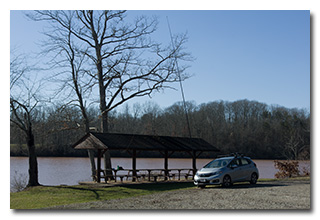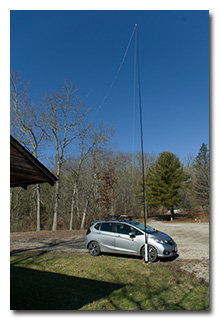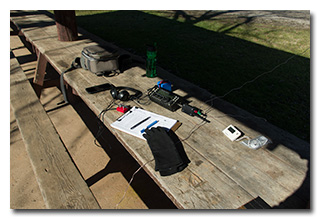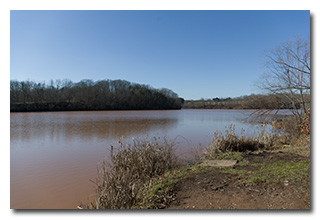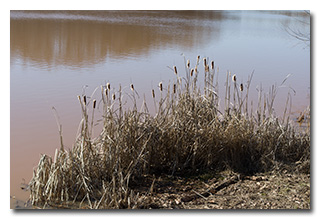
by William Eric McFadden
Veto Lake Wildlife Area at Athens Conservancy:
-
Veto Lake Wildlife Area is located in Washington County, just east of Ohio State Route 339 at Veto. According to the Division of Wildlife, it has 160 surface acres of water and six miles of shoreline. A GIS analysis finds a current 148 acres of water in the lake, which has two dams at the outlet end. The entire property is 433 acres, with the largest block of contiguous non-inundated land at the north end. There is also a non-contiguous area of 74.5 acres just to the west of the main area (which is 358.5 acres by itself). The area features parking, a boat ramp, a picnic pavilion, pit toilets, and an archery range. Curiously, this wildlife area is almost invisible on the Division of Wildlife website.
While the Division of Wildlife owns the shorelines of the lake itself, the northwest and southwest areas above the shorelines are completely subdivided into housing lots. The eastern side of the lake is bordered by Lake Road. There are no developed trails around the lake.
Pictures
Description
On Saturday, February 3, 2024, one member of the Southeast Ohio Radio Adventure Team performed a successful activation of Veto Lake Wildlife Area (K-10697) as part of the Parks on the Air (POTA; link) program while participating in the annual Arizona ScQRPions Freeze Your B___ Off (FYBO; link) field operating event.
Having not yet visited Veto Lake Wildlife Area, which was just recently added to the POTA program, Eric McFadden, WD8RIF, chose to perform his first activation of this unit while also participating in FYBO, a QRP field event in which the score-multiplier is inversely proportion to the temperature measured at the key.
Eric arrived at the Veto Lake picnic area at about 1450 UTC to find it unoccupied. Because it wasn't too bitterly cold, Eric chose to perform his operation in the picnic shelter, locating his station so that the warm sun would hit his back. Eric quickly deployed his 28½' end-fed wire as a sloper up to the top of his 31' Jackite telescoping fiberglass mast supported on a drive-on base, arranging three 17' counterpoise wires directly on the ground. Setting up his Elecraft KX3 on the picnic table, Eric was on the air at 1501 UTC.
Eric was surprised but pleased to find that he had good cell signal at the picnic area and would be able to spot himself on the POTA Spots (link) and to use POTA Spots to identify possible Park-to-Park (P2P) QSOs.
The FYBO rules allow all contacts made during the contest period to be counted as valid FYBO contacts. Furthermore, the rules allow those participating in other programs, such as POTA, to send that program's usual exchange. Because of these two rules, Eric decided to run his operation as a straight POTA activation and to not send the FYBO exchange.
Because his friend Thomas, K4SWL, needed the park as a hunter, Eric began his operation on 40m. Choosing a clear frequency to run, Eric texted the frequency to Thomas, and began calling "CQ POTA". Eric's first QSO came immediately with K4SWL in North Carolina and logged his temperature-at-the-key as 37°F. Eric had to call "CQ POTA" a few additional times in order for him to be auto-spotted to POTA Spots, and Eric's second QSO came at 1505 UTC with WX4TW in North Carolina. QSOs on 40m came very quickly, with Eric's twenty-second QSO coming 1525 UTC with KF9R in Indiana. This run included QSOs with operators located in North Carolina (3), Illinois (2), Pennsylvania, Michigan, Kentucky, South Carolina, Tennessee (2), New Jersey, Virginia (2), Ohio (3), Indiana (2), Ontario, Georgia, and New York. During this run, the recorded temperature rose from the initial 37° to 40°.
Switching to 20m, Eric found himself a clear frequency to run and began calling "CQ POTA" and was again auto-spotted to POTA Spots. Eric's first QSO in this run came at 1529 UTC with N4NR in Florida. QSOs came quickly, with Eric's thirty-sixth QSO in this run coming at 1603 UTC with KX4MI in South Carolina. This run included a P2P QSO with VA3DXP operating as VE3CWM at Diefenbunker National Historic Site (VE-5083) in Ontario, a P2P QSO with WB3GBL at Ocala National Forest (K-4471), and QSOs with operators located in Florida (8), Texas (7), Wisconsin (4), Idaho, Maine, Nova Scotia, Alabama, Tennessee, New York, Ontario, Illinois, Kansas, New Hampshire, Massachusetts (3), Missouri, Oklahoma, Nebraska, and South Carolina. During this run, the recorded temperature rose from 40° to 43°.
In all, Eric made fifty-eight QSOs in about sixty-two minutes of on-air time. All of Eric's QSOs were CW and were made at five watts output.
During the operation, Eric found that he remained (relatively) comfortable despite the cold temperatures, and that he could complete his paper log (reasonably neatly) and could send CW (reasonably well) with his gloved hands. (Eric was wearing long johns under his slacks, a turtleneck shirt, a wool sweater, a wool scarf, a knitted wool cap, an MA-1 flight jacket, and leather/nomex gloves.)
In FYBO, Eric completed fifty-eight QSOs and thirty-two SPCs and he earned the x4 multiplier for temperature between 30°and 39° and the x4 multiplier for "Field".
UPDATE: Unexpectedly, it seems Eric earned the highest score in FYBO 2024. The event results can be viewed here: https://qrpcontest.com/FYBO/autolog.php?dbname=FYBO2024.sqlite3.
(return)
